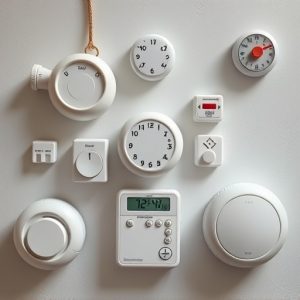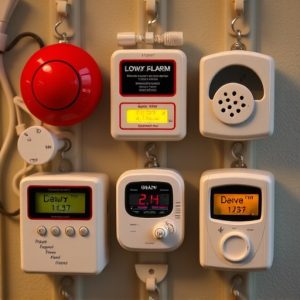Personal Alarm Devices: Sound Penetration & Real-World Protection
Handheld personal protection alarms are compact yet powerful tools for individual safety, featuring…….
Handheld personal protection alarms are compact yet powerful tools for individual safety, featuring high-decibel Personal Alarm Sounds that penetrate walls (120-140 dB). Modern devices use sound wave science to transmit noise through barriers, ideal for self-defense, travel, and emergency response. When choosing an alarm, prioritize Personal Alarm Sound penetration capabilities and consider features like easy controls, long battery life, water resistance, GPS tracking, and panic buttons. These devices, including compact sound pens, offer immediate response in dangerous situations, making them essential for outdoor activities or urban settings. Legal implications and safety guidelines should be understood, with responsible use and adherence to local laws crucial to avoid legal repercussions.
“Personal alarm devices have evolved beyond simple noise makers, incorporating sophisticated technology for enhanced personal protection. In this comprehensive guide, we explore handheld personal protection alarms and their ability to penetrate sound walls. From understanding the device’s core functionality to delving into real-world applications, legal considerations, and crucial features to look for, this article equips you with insights to make informed decisions in ensuring safety.”
- Understanding Handheld Personal Protection Alarms
- The Science Behind Sound Penetration Walls
- Features to Consider When Choosing a Device
- Real-World Applications and Use Cases
- Legal Implications and Safety Guidelines
Understanding Handheld Personal Protection Alarms
Handheld personal protection alarms are compact, portable devices designed to provide immediate protection in various situations. These alarms offer a discrete yet powerful solution for individuals seeking safety and peace of mind. When activated, they emit a loud and distinct Personal Alarm Sound that can penetrate walls, ensuring maximum visibility and deterrence. This feature is particularly beneficial in enclosed spaces or noise-prone areas where the alarm’s impact might otherwise be diminished.
These devices are easy to use, often requiring a simple trigger mechanism to set off the sound. Their compact size allows for convenience and ease of carrying, whether in a pocket, bag, or attached to a key chain. With a range of options available, from basic models to advanced devices with additional features, handheld personal protection alarms cater to diverse needs—from everyday self-defense to specialized applications like travel safety and emergency response.
The Science Behind Sound Penetration Walls
The effectiveness of personal alarm devices in penetrating walls is rooted in the science of sound waves and their interaction with various materials. When a loud sound is produced, it travels through the air as pressure waves, capable of transmitting energy through solid objects. This phenomenon is what enables handheld personal protection alarms to be heard even when the user is inside a structure. The key lies in the frequency and amplitude of the sound; higher frequencies can often penetrate walls better than lower ones, as they tend to bend around corners and find openings more effectively.
Modern personal alarm devices utilize high-decibel sounds, typically ranging from 120 to 140 decibels, which far surpasses the typical human pain threshold. This intense noise is designed to startle and alert anyone within earshot, ensuring quick response times during potentially dangerous situations. The sound waves can travel through walls, floors, or ceilings, reaching individuals on the other side, making these devices particularly useful in emergency scenarios where speed and distance from help might be factors.
Features to Consider When Choosing a Device
When selecting a handheld personal protection alarm device, several key features should be at the top of your list. Firstly, consider Personal Alarm Sound; look for devices with loud, high-decibel alarms capable of piercing through even the busiest environments or walls. This ensures maximum attention and response time in case of distress. Secondly, Wall Penetration is crucial; some models employ advanced technology to trigger alerts across barriers, providing an extra layer of safety in various settings.
Additionally, think about convenience and functionality. Devices with easy-to-use controls, long battery life, and water resistance are practical choices for everyday carry. Some models even offer GPS tracking, panic buttons, or light functions, enhancing their versatility. Remember, the right personal alarm device should offer peace of mind while being easily accessible in emergencies.
Real-World Applications and Use Cases
Personal alarm devices, often in the form of compact sound pens, have evolved beyond their basic function as a distress signal. In real-world applications, these handheld gadgets offer a range of use cases that cater to both personal safety and emergency preparedness. One of the most significant advantages is their ability to penetrate walls, ensuring users can activate an alarm even if they are inside a structure. This feature makes them invaluable for individuals living or working in high-risk areas, providing an immediate response in case of danger.
For instance, during outdoor activities like hiking or camping, these alarms can be crucial tools against wildlife encounters or unexpected weather changes. Urban dwellers might use them as a last resort in potentially dangerous situations, especially when alone or in isolated spaces. The personal alarm sound, loud and distinct, serves as a powerful deterrent and a means to attract attention quickly, making it an essential accessory for anyone prioritizing their safety and peace of mind.
Legal Implications and Safety Guidelines
When considering handheld personal protection alarm devices, it’s crucial to understand the legal implications and safety guidelines that come into play. In many jurisdictions, carrying such devices is legal, but there are restrictions on decibel levels and activation methods. The primary concern revolves around ensuring the Personal Alarm Sound doesn’t cause unnecessary distress or harm, especially in public spaces.
Safety guidelines emphasize responsible use, suggesting individuals should only activate alarms when facing imminent danger. Moreover, these devices should be tested for effective sound penetration through walls to ensure they can alert neighbors or authorities in emergency situations. Users must also familiarize themselves with local laws and bystanders’ rights to prevent any legal repercussions arising from misusage.
Handheld personal protection alarm devices, with their powerful personal alarm sound penetration walls, offer a sense of security in various situations. By understanding the science behind sound penetration and considering key features, users can make informed choices to protect themselves. These devices find applications across different scenarios, from personal safety to community watch programs. Staying aware of legal implications and following safety guidelines ensures these tools are used effectively while promoting a safer environment.


